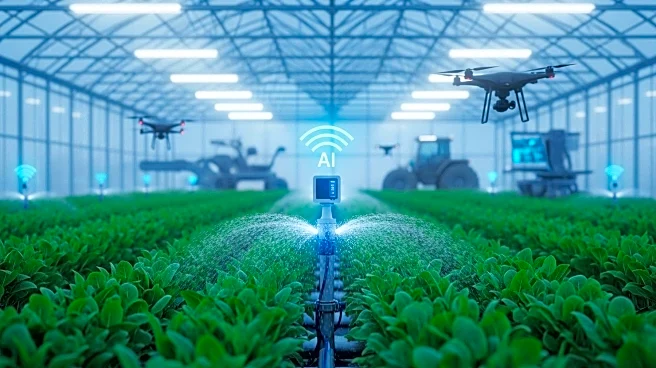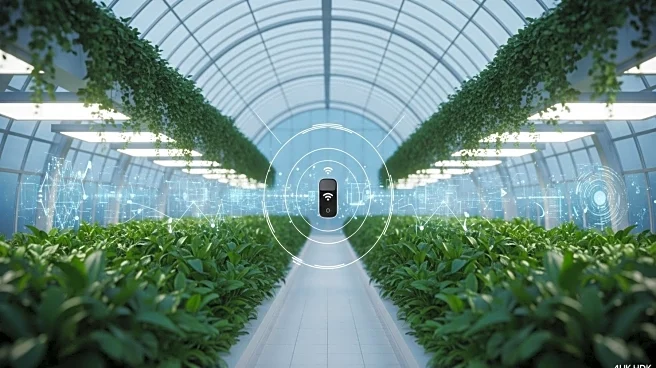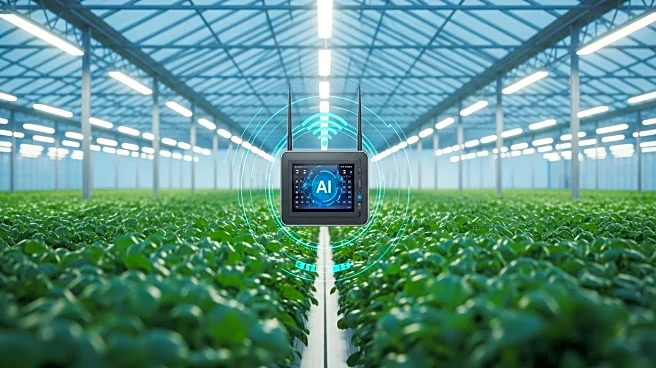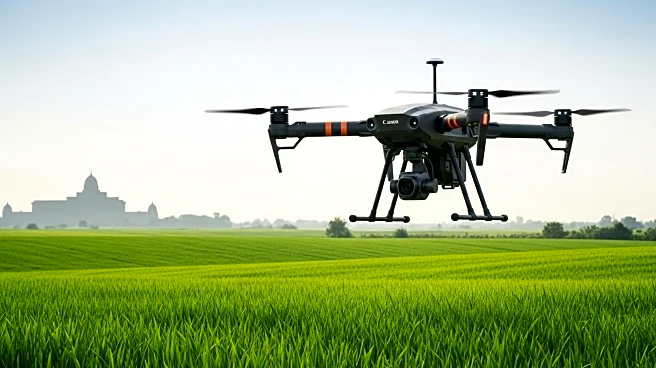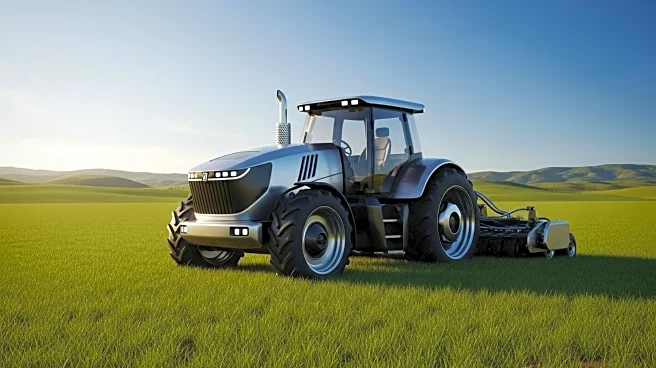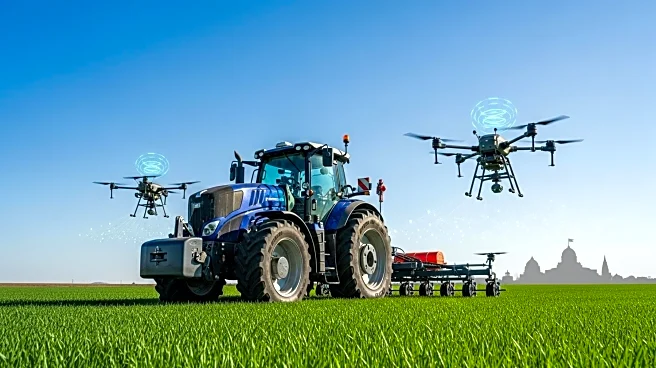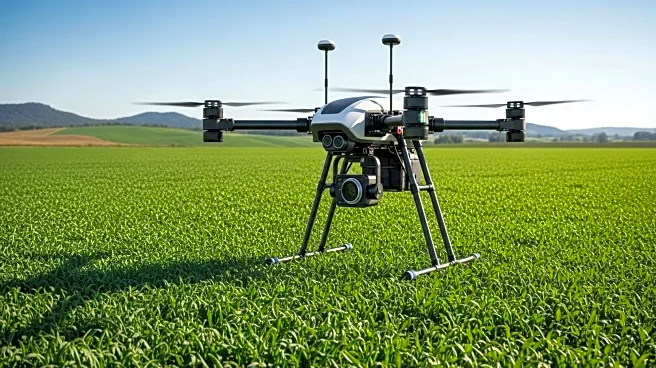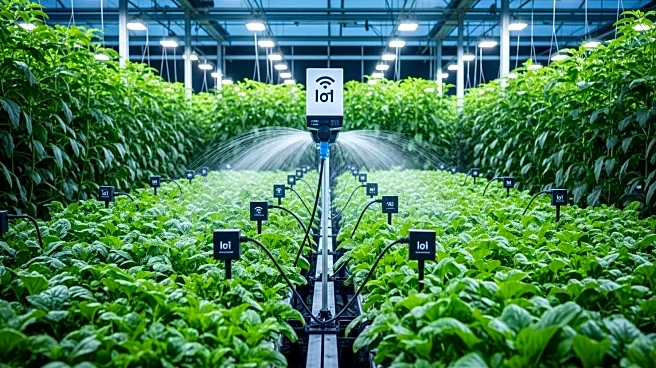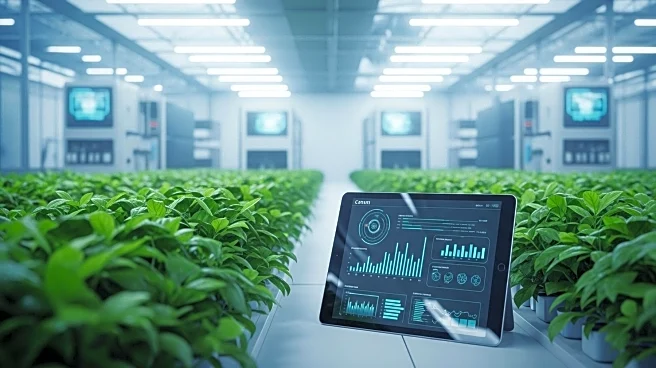What's Happening?
The Agriculture 4.0 market is experiencing significant growth, driven by the integration of advanced digital technologies such as the Internet of Things (IoT), artificial intelligence (AI), and robotics. These technologies are enhancing agricultural productivity by optimizing resource utilization and promoting environmental sustainability. The market, valued at USD 68.7 billion in 2024, is projected to reach USD 210.3 billion by 2034, with a compound annual growth rate (CAGR) of 12.4%. The adoption of smart farming solutions is increasing across both developed and emerging economies, supported by government initiatives aimed at strengthening food security and promoting sustainable farming practices.
Why It's Important?
The growth of the Agriculture 4.0 market is crucial for addressing the rising global food demand, which is expected to increase significantly over the next decade. By deploying technologies like AI and IoT, the agricultural sector can improve yield forecasting, resource utilization, and environmental sustainability. This technological shift is essential for ensuring food security and meeting the needs of a growing population. Additionally, the market expansion is supported by venture capital investments and the emergence of agri-tech startups, which are introducing innovative solutions to modernize traditional farming practices.
What's Next?
The Agriculture 4.0 market is poised for further expansion as more farmers adopt precision agriculture techniques. Companies like John Deere are establishing new business entities to help farmers upgrade their equipment to meet the demands of modern farming. This includes providing hardware and software options to enhance existing equipment with features like sensors and intelligent application systems. As the market continues to grow, challenges such as high initial capital investment and the need for skilled personnel will need to be addressed to ensure widespread adoption.
Beyond the Headlines
The shift towards Agriculture 4.0 has deeper implications for data privacy, cybersecurity, and system interoperability. As farming becomes more digitalized, these concerns will become increasingly important. Additionally, limited internet connectivity in remote areas may restrict technology adoption, highlighting the need for improved infrastructure. The lack of harmonized regulatory frameworks in certain regions could also impede the efficient implementation of smart farming solutions.

